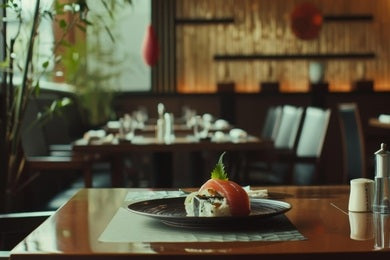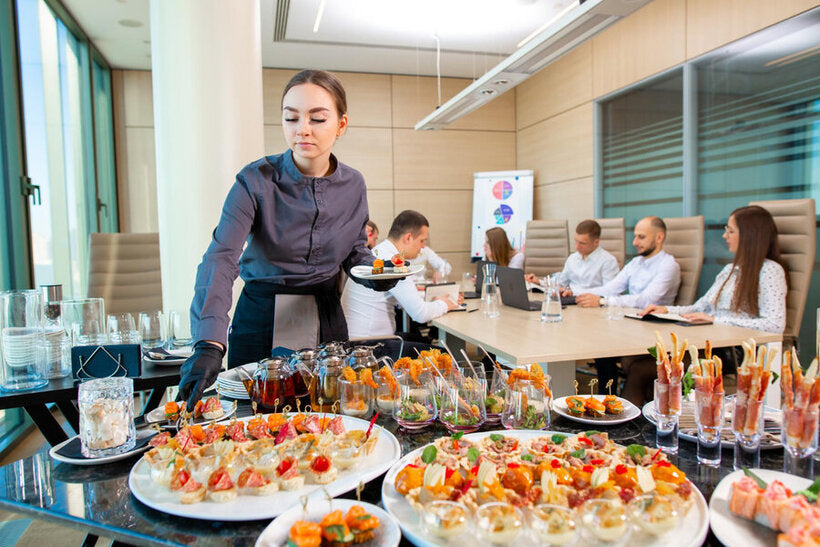
A Guide to Different Types of Japanese Restaurants
Step through the Noren curtains of a Japanese restaurant, and you enter a world defined by exquisite specialization. The dining landscape across Japan unfolds like a carefully cultivated garden, each establishment occupying its own distinct ecological niche. From reverent temples of traditional cooking techniques to playful modern interpretations, the remarkable spectrum of Japanese restaurants offers diners far more than mere sustenance.
Each dining category tells a unique story about Japan's culinary philosophy, where chefs might dedicate their entire careers to perfecting singular dishes or techniques. This rich tapestry of Japanese restaurant types spans everything from hushed counters where sushi masters work in meditative silence to raucous izakayas where sake flows freely alongside small plates. Whether you're seated on tatami mats in centuries-old establishments or perched at sleek contemporary counters, understanding these distinct categories transforms a simple meal into a window onto Japanese cultural values, history, and aesthetics.

Traditional Formal Dining Establishments
The upper echelon of traditional Japanese dining features restaurants where culinary traditions are preserved with almost religious devotion.
Ryotei: Dining Chambers of the Elite
Behind modest facades hide Japan's most exclusive dining venues—ryotei. These historic properties house private dining chambers where sliding doors reveal immaculate garden views and staff appear only when needed, vanishing just as discreetly.
The Japanese dining style of ryotei once operated strictly by referral—new guests required personal introductions from existing clientele, limiting access to political and cultural elites. While economic shifts have made these establishments somewhat more accessible to international visitors, they remain bastions of exclusivity.
Ryotei's brilliance lies in refined understatement—luxury expressed through subtle details: hand-crafted wooden table signs, seasonal ikebana arrangements, and centuries-old tableware chosen specifically for each dish, season, and even weather conditions. Here, dining transcends nourishment to become ceremonial art.
Kaiseki: Gastronomic Poetry in Multiple Verses
The pinnacle of Japanese culinary expression finds form in Kaiseki—not merely a meal but a narrative told through seasonal ingredients. Born from the austere aesthetics of tea ceremony dining, this traditional Japanese dining experience has evolved into an elaborate sequence where each plate forms one chapter in a larger seasonal story.
Rather than overwhelming diners with opulence, Kaiseki's brilliance lies in restraint—perfect miniature landscapes of food where nothing appears by accident. The chef's invisible hand guides guests through an edible meditation on nature's current moment:
-
Sakizuke opens the dialogue—a precise morsel awakening the palate while hinting at the seasonal theme to follow.
-
Hassun bridges mountain and sea environments through carefully juxtaposed appetizers.
-
Mukōzuke presents raw fish at its most pristine state, often reflecting regional waters.
-
Takiawase demonstrates the technique of separate simmering—vegetables and proteins cooked individually to perfect doneness, then reunited on the plate.
-
Yakimono introduces fire's transformative touch through grilled seasonal selections.
-
Several intermediate courses continue the narrative through different techniques.
-
Mizumono concludes with delicate sweetness, often featuring seasonal fruit elements.
The true genius of Japanese food style emerges in kaiseki's seemingly contradictory attributes—it simultaneously follows strict traditional progression while allowing for profound personal expression. No two chefs interpret autumn's transition or spring's emergence identically, giving each meal unrepeatable qualities while maintaining the fundamental structure established over centuries.
Kappo: Counter-Style Chef Interaction
Kappo restaurants strike a balance between formal Kaiseki and casual dining. Customers sit at a counter directly facing chefs who prepare dishes before their eyes, creating an intimate connection between craftspeople and diners. The term "kappo" combines characters meaning "to cut" and "to cook," highlighting the technical skills on display.
This arrangement breaks down the formality of traditional Japanese dining while maintaining culinary excellence. Conversations with chefs flow naturally, allowing curious diners to learn about ingredients and techniques throughout the meal—educational and delicious simultaneously.

Specialized Japanese Restaurants
Unlike Western restaurants prizing menu variety, Japanese culinary culture celebrates a singular focus—establishments perfecting one dish or technique over generations. Visit these specialists to experience the profound results of such dedicated concentration:
-
Sushi Counters: From exclusive eight-seat ateliers to accessible conveyor belt operations, traditional sushi-ya feature chefs who read customer reactions and continuously adjust flavor balance while apprentices spend years mastering rice preparation alone. Many conduct soft opening periods to refine techniques before official launches.
-
Tempura Workshops: These specialists transform simple battered ingredients into ethereal creations through precise oil temperature control and split-second timing. Premium tempura counters serve each morsel immediately after frying, preserving the magical contrast between gossamer-crisp coating and intensified inner flavors.
-
Yakitori Sanctuaries: Skewered chicken parts—from familiar breast to adventurous heart or cartilage—grilled over binchotan charcoal create smoky perfection in these lively establishments where business people unwind, showcasing a democratic aspect of dining in Japan.
-
Eel Houses: Traditional unagi-ya handle every step from deboning to repeatedly basting with house-made sauce during charcoal grilling. Their signature dish—caramelized eel atop steamed rice in lacquered boxes—epitomizes the Japanese transformation of a single ingredient through meticulous technique.
-
Tonkatsu Specialists: Heritage pork, hand-breaded with specially formulated panko and fried at precise temperatures, elevates the humble cutlet to culinary art. The Japanese types of restaurants specializing in these golden-brown masterpieces demonstrate how seemingly simple comfort foods achieve sublime status through obsessive quality control.
-
Ramen Innovators: Regional variations like Hakata's rich tonkotsu or Sapporo's buttery miso showcase dedicated ramen-ya developing complex broths through 60+ hour simmering processes. Their fanatical approach to depth and clarity embodies the extreme specialization behind many Japanese restaurant types. Unlike the stereotype of instant noodles, authentic ramen-ya focus on developing complex broths through painstaking processes:
-
Tonkotsu: Pork bones simmered until they dissolve into milky richness
-
Shoyu: Clear chicken and vegetable stock infused with premium soy sauce
-
Miso: Hearty broths enhanced with fermented soybean paste
-
Shio: Delicate, salt-based broths showcasing clear flavors
-
Tsukemen: Concentrated dipping broths paired with cold noodles
-
Noodle Artisans: Soba specialists mill their own buckwheat, and udon masters knead dough using traditional foot techniques (fumimomi), which represent Japanese minimalism at its purest. Their craftsmanship demonstrates a core philosophy of different types of Japanese cuisine: when ingredients and technique achieve perfection, elaborate embellishments become unnecessary.
Casual Dining Experiences
Beyond the rarefied air of high-end establishments, Japan boasts a vibrant ecosystem of casual eateries where locals gather for everyday meals. These unpretentious venues reveal as much about Japanese food culture as their more celebrated counterparts.
Izakaya: The Living Room of Japanese Society
Step into an izakaya, and you've entered Japan's communal living room—bustling spaces where the boundary between drinking and dining dissolves entirely. Unlike Western bars with food as an afterthought, izakaya craft an extensive menu of small, shareable plates that pair perfectly with beer, sake, shochu, and highballs.
What makes izakaya special isn't culinary precision but rather its role as a social lubricant. Office hierarchies temporarily relax as coworkers cluster around tables laden with karaage (fried chicken), edamame, grilled fish, and simmering hot pots. The concept of "nomunication" (drinking + communication) finds its perfect expression here—conversations flow freely as plates empty and glasses refill.
The payment system at busy izakayas can be wonderfully chaotic. Modern establishments increasingly employ handcrafted leather-bound restaurant check presenter to keep track of the evening's accumulated dishes and drinks—practical tools that add a touch of refinement to these otherwise boisterous hangouts.
Shokudo: Japan's Answer to Home Cooking
Every society needs places where people can eat affordable, nourishing meals without fuss—in Japan, shokudo fill this essential niche. These canteen-style establishments deliver balanced teishoku (set meals) where a main protein accompanies rice, soup, pickles, and vegetable sides on a single tray, mirroring the structure of traditional home cooking.
What Shokudo lacks in ambiance, they compensate for with practicality and value. A typical lunch hour reveals their democratic appeal as construction workers, office employees, and students sit elbow-to-elbow, quickly refueling before returning to their days. These humble eateries offer perhaps the most authentic window into everyday dining in Japan—where nutritional balance and efficiency matter more than culinary showmanship.
Look for shokudo's plastic food displays in windows—remarkably accurate representations of their menu items that solve the language barrier for visitors while helping locals make quick decisions. This practical approach to food service embodies Japan's gift for combining utility with visual appeal.
Yatai: Curbside Culinary Theater
As evening falls across Japan's cities, wheeled kitchens emerge from storage to create ephemeral dining rooms under the stars. These yatai (street food stalls) transform mundane street corners into vibrant culinary theaters where chefs perform for small audiences seated on simple stools.
Unlike the polished food truck scenes of Western cities, traditional yatai possess a makeshift charm—plastic curtains protect customers from the elements, steam billows into the night air, and chef-proprietors often become neighborhood characters. Their limited menus excel through specialization: a ramen yatai might serve only one perfected broth style, while a takoyaki stall flips octopus-filled batter balls with mesmerizing dexterity.
Though modernization and health regulations have diminished their presence in most cities, Fukuoka's Nakasu district preserves this vanishing element of Japanese food styles. Here, dozens of yatai cluster along the riverfront, creating an open-air food alley where locals and tourists congregate for late-night meals and conversation—a last bastion of the street dining culture that once flourished nationwide.
Chainstore Cuisine: Modern Convenience Meets Tradition
Japanese chain restaurants upend Western fast food expectations by delivering exceptional quality at accessible price points. Unlike their American counterparts, establishments like Yoshinoya maintain impressive culinary standards while serving millions daily.
The kaiten-zushi (revolving sushi) industry exemplifies this balance through innovation—touchscreens, automated conveyor systems that track consumption by plate color, and even reward games for returning empty plates. These technologies enable Kura Sushi and similar chains to offer surprisingly fresh seafood affordably.
Despite purists' objections to these mainstream interpretations of Japanese types of cuisine, their cultural significance is clear: they democratize regional specialties nationwide while providing foreigners approachable entry points into Japanese food culture through standardized menus and consistent quality.

Modern takes on Japanese cuisine
Japanese culinary traditions aren't frozen in amber but continually evolve through innovation and cross-cultural exchange. Contemporary dining scenes showcase this creative evolution in exciting ways.
Culinary Border-Crossers
Today's innovative chefs increasingly blend different types of Japanese cuisine with global influences. These boundary-breaking establishments might infuse Italian techniques with Japanese seasonality (Itameshi), incorporate French precision alongside washoku philosophy (Wafū-Furenji), or explore entirely new hybrid forms. During the early soft opening phases, these restaurants often workshop their distinctive fusion concepts, crafting dishes that respect tradition while embracing international dialogue.
Food Basement Wonderlands
Descend to the basement levels of major department stores and discover depachika—Japan's extraordinary food halls where hundreds of meticulously presented delicacies create a gastronomic fantasyland. These subterranean treasure troves feature satellite counters from famous restaurants, regional specialty producers, and luxury patisseries, all with presentation standards that transform shopping into a visual feast. The exceptional quality maintained throughout these sprawling marketplaces reveals Japan's commitment to culinary excellence at every price point.
Tech-Enhanced Quick Service
The latest generation of Japanese restaurants embraces efficiency without sacrificing quality. From tablet-based ordering systems and automated conveyor belts at modern ramen shops to AI inventory management at donburi chains, these establishments harness technology to deliver traditional flavors to busy urbanites. Though streamlined for contemporary lifestyles, these venues maintain core Japanese culinary values—quality ingredients, proper technique, and aesthetic presentation—while adapting to modern dining patterns.

Japanese Dining Etiquette by Restaurant Type
Understanding basic customs enhances experiences across various types of Japanese restaurants.
Seating Customs and Traditional Practices
Different establishments observe distinct conventions:
-
Formal restaurants typically require shoe removal before entering tatami areas
-
At specialist counters, seats nearest the chef's right hand are traditionally reserved for senior or valued customers
-
Izakaya may seat different parties together during busy periods
-
Some traditional establishments still use zabuton cushions rather than chairs
These subtle customs help define the experience of traditional Japanese dining and show respect for established practices.
Ordering Protocols
Ordering methods reflect each restaurant's style:
-
High-end establishments often serve omakase (chef's selection) or fixed courses
-
Specialized restaurants feature focused menus highlighting their expertise
-
Many casual places use ticket machines where you purchase meal tickets before being seated
-
Izakaya typically provides order sheets to mark selections
Contemporary restaurants increasingly use elegant restaurant check presenters from specialty makers Kyivworkshop to discreetly deliver bills at mealtimes.
Payment Customs When Dining in Japan
Japanese payment practices differ from Western norms:
-
Tipping is generally not practiced and may cause confusion
-
Many establishments require payment at a register rather than tableside
-
Cash remains preferred at traditional places, though card acceptance is growing
-
Some restaurants charge an otōshi (table charge) that includes a small appetizer
Must-Try Dishes by Restaurant Category
Each establishment type showcases signature Japanese popular dishes worth seeking out.
Signature Dishes at Each Establishment Type
-
Ryotei/Kaiseki: Seasonal delicacies like hamo (pike conger) in summer or delicate fugu preparations in winter
-
Sushi-ya: Premium fish like ōtoro (fatty tuna belly) or seasonal specialties like shinko (new season gizzard shad)
-
Tempura-ya: Seasonal vegetables like taranome (angelica tree buds) or luxury seafood like kuruma ebi (Japanese tiger prawn)
-
Yakitori-ya: Negima (thigh meat with green onion) and specialty parts like juicy tsukune (chicken meatballs)
-
Unagi-ya: Unajū (lacquered box with grilled eel over rice)
-
Tonkatsu-ya: Rosu (loin) or hire (tenderloin) cutlets with fresh-made tonkatsu sauce
-
Ramen-ya: Regional specialties from thick Sapporo miso to delicate Hakata tonkotsu
-
Soba-ya/Udon-ya: Zaru soba (cold noodles with dipping sauce) or kake udon (hot noodles in broth)
-
Izakaya: Karaage (fried chicken), fresh sashimi, and seasonal fish grilled with salt (shioyaki)
Seasonal Specialties to Watch For
Seasonality profoundly influences Japanese food styles, with menus changing to showcase:
-
Spring: Tender takenoko (bamboo shoots), sakura-themed desserts
-
Summer: Refreshing hiyashi chūka (cold ramen), grilled unagi, chilled sōmen noodles
-
Autumn: Aromatic matsutake mushrooms, fatty sanma (Pacific saury), sweet chestnuts
-
Winter: Warming nabe (hot pots), oden stews, fugu preparations
Regional Variations
Japan's diverse regions offer distinctive culinary interpretations:
-
Hokkaido: Spectacular seafood, hearty soup curry, miso ramen with butter and corn
-
Tohoku: Kiritanpo (pounded rice skewers), wanko soba (rapid-serve small portions)
-
Kansai: Osaka's savory okonomiyaki, Kobe beef, subtly flavored dashi
-
Kyushu: Rich tonkotsu ramen, spicy mentaiko (cod roe), champon noodles
Finding Your Way Through Japan's Restaurant Landscape
The remarkable diversity of Japanese restaurants reflects a culture that values specialization, seasonal awareness, and technical precision. Whether you're seated in a hushed ryotei or perched on a stool at a lively yatai stall, each establishment offers a unique perspective on Japanese food culture.
For newcomers to Japanese dining, consider these practical tips:
-
Begin with izakaya to sample various dishes in a relaxed atmosphere
-
Look for restaurants displaying plastic food models if you're uncertain about menu items
-
Don't hesitate to ask for recommendations (osusume)
-
Remember that specialized restaurants excel at their focus dishes
-
Follow other diners' lead when unsure about customs
As Japanese restaurant types continue evolving, we see fascinating developments in sustainability practices, technology integration, and creative fusion approaches. Whether you seek the time-honored traditions of traditional Japanese dining or modern interpretations, understanding these distinct categories enhances appreciation for one of the world's most sophisticated food cultures.




Leave a comment
This site is protected by hCaptcha and the hCaptcha Privacy Policy and Terms of Service apply.